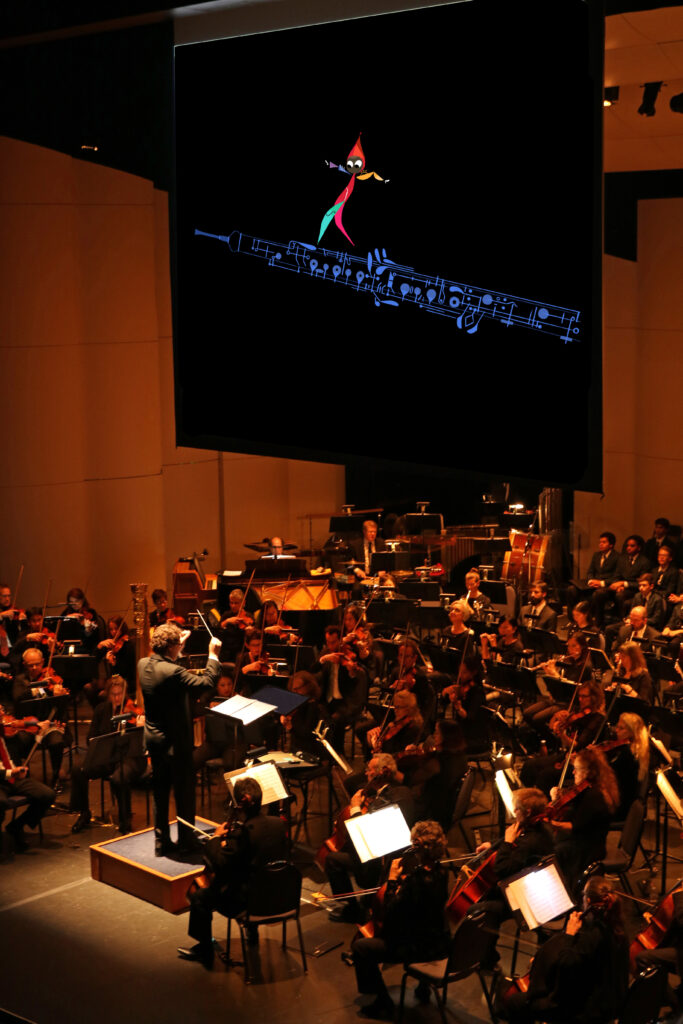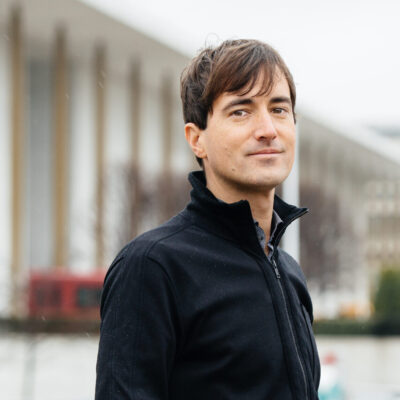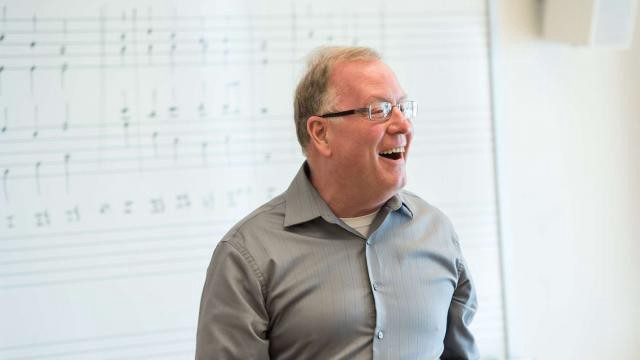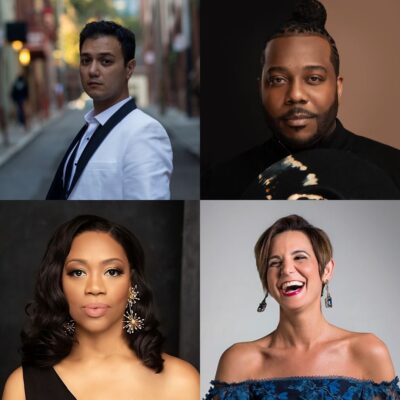Kim Rooker is the Bay Area’s go-to expert in productions featuring movies with the soundtrack played by a live orchestra for over a decade. We go behind the scenes with Kim to learn how the orchestral, live movie magic comes together—so the images you see on screen stay in time with the music.

California Symphony Orchestra: How long have you been doing live orchestra video production?
Kim Rooker: Since 2006, when we installed a film projection system at Davies Hall for a San Francisco Symphony performance of Charlie Chaplin’s score, set to the movie City Lights. Until that point, there was no way for the conductor to sync the music to the film other than visual reference to the movie.
Before then, I was doing audio and video production for big corporate events for companies like Apple and Pepsi. Then an associate brought me in to supervise a projection install at San Francisco Symphony’s Davies Hall for Bugs Bunny on Broadway, a clip show of Looney Tunes cartoons which featured classical music including Puccini’s Barber of Seville and Wagner (Elmer Fudd’s Magic Helmet). The Symphony staff asked me if I could help them with opera supertitles and other projects requiring video support, and one thing led to another. The early film-with-orchestra projects were older films like The Wizard of Oz, Singing in the Rain, Casablanca, and many Hitchcock films.
CSO: How do you make sure the orchestra and the video stay in sync?
KR: To keep the orchestra in sync with the movie the conductor has a video monitor in front of him with the movie and a lot of timing information. The video program is called Streamers and provides an accurate status of the measure of the score to be played as well as tempo changes. Also provided in Streamers are vertical lines that cross the screen (warnings) and flashes (punches) to cue actual starts of musical segments. These lines and flashes are the early way conductors produced music for film studio recording. A grease pencil line was drawn from side to side along several frames of a film. This appears as a line crossing the film when projected. The flashes were produced by punching holes in the film with a hole punch. Between the early method of streamers and punches as well as measure and tempo changes the conductor has very accurate information as to where they are in the score and what to expect.
Another helpful method for accurate syncing is the use of click track. The conductor and orchestra wear an ear-piece that provides the tempo changes as a soft click that only they can hear. The click-track method of syncing has beed used for many years and pre-dates the use of the more modern Streamers visual cues.
Because the orchestra relies on the information provided by the conductor’s Streamers and the musicians hearing click track, the musical segments of a film will always be in sync. On occasion, I have also provided Streamer video monitors for musicians on some films.
For Philharmonia Fantastique the orchestra will be using both Streamers and click track. I think the result is quite impressive.
CSO: What is the trickiest part of your work?
KR: Because for the actual performance I just start the video playback, the real work is setting up the system and the rehearsal. I am also responsible for the projection and make sure there is a quality image on the screen.
CSO: Do you actually get to enjoy the movie?
KR: I get to see the rehearsals and the final rehearsal is great because I can sit in the best seat in the house.
CSO: Do you have a favorite movie you’ve worked on? And is there any movie that you’re just completely over because you’ve spent so much time on it?
KR: Many of the movies with orchestra have music composed by John Williams: Raiders of the Lost Arc, Jurassic Park and Star Wars are all very enjoyable. Amadeus was wonderful and a hard ticket to get. Many of the Pixar movies are popular and the “clip show” (segments of many films) is great fun.
The Harry Potter series of eight movies has John Williams’ music on the first four. With rehearsals and several show days, seeing each movie many times makes for a lot of the Harry Potter story!
Kim Rooker will be behind the scenes for Philharmonia Fantastique, which will play on the big screen while the orchestra performs the score at BRAHMS ODYSSEY, Saturday, Nov. 2 and Sunday, Nov. 3 at the Lesher Center in Walnut Creek.
Tickets start at $50 / $25 for kids and students under 25 with valid student I.D. at californiasymphony.org or call the Lesher Center Box Office at 925.943.SHOW.



